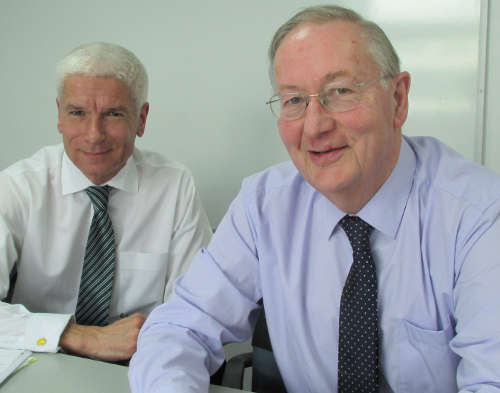Council chiefs have agreed to help shape proposals for a Major Road Network (MRN) - combining key local routes with the strategic network - developed by transport grandees Phil Carey and David Quarmby.
Mr Carey and Mr Quarmby, who have developed the MRN concept during a two-year project, presented their plans to the Environment, Economy, Housing and Transport Board of the Local Government Association (LGA) – the first time they have been shown to elected politicians.
The presentation was positively received and councillors agreed to allow LGA officials to help shape the MRN proposal.
The architects of the plans warned that funding for a proposed MRN from the future National Road Fund (NRF) should not simply replace existing money given to councils.

Phil Carey and David Quarmby
Although they have worked closely with Department for Transport officials, including two at director level, plans for the MRN, which would combine 4,400 miles of Highways England’s Strategic Road Network (SRN) with around 3,600 miles of major local authority roads, have not so far been shown to ministers.
Former civil servant Mr Carey told councillors the ‘special treatment’ for the SRN, which has a generous five-year funding package, ‘has really become our key focus’.
Last July chancellor George Osborne announced that England will have a dedicated roads fund by the end of decade, using around £6bn ringfenced vehicle excise duty. In Treasury briefing documents it suggests this would be spent on the Strategic Road Network.
However, Mr Carey said it was not certain that in practice this would mean just Highways England’s roads, and asked ‘why should it be just that, that 2% of all roads?’
He added: ‘We’re making the case for the National Road Fund funding the local road component of the MRN too, putting them as far as possible on a level playing field with Highways England roads.
‘We believe there could be some capacity in the fund going forward in terms of headroom in the funding available.’
However, he added: ‘Of course, we need to be very careful to make sure it isn’t just allowed to replace central government funding to local authorities through existing channels.’
Mr Quarmby and Mr Carey stressed that they had not produced a blueprint for an MRN but an ‘indicative’ idea of what one might look like, based on objective criteria, plus ‘a degree of judgement’.
Mr Carey agreed with one councillor who suggested that it would be important to consult councils on their development plans. ‘It has to be a dynamic concept,’ he said.
However, Cambridgeshire councillor Steve Count said those drawing up the MRN should avoid local highways authorities ‘popping their little projects in’ as this would devalue the project.
‘Once you let people like me interfere, with my local highways authority – and also with my LEP – hat on, jam my proposals in, then it starts weakening the argument for the whole,’ he observed humourously.
Board chair Peter Box suggest that it would make a ‘great topic’ for the Councillors’ Forum.
Register now for full access
Register just once to get unrestricted, real-time coverage of the issues and challenges facing UK transport and highways engineers.
Full website content includes the latest news, exclusive commentary from leading industry figures and detailed topical analysis of the highways, transportation, environment and place-shaping sectors.
Use the link below to register your details for full, free access.
Already a registered? Login